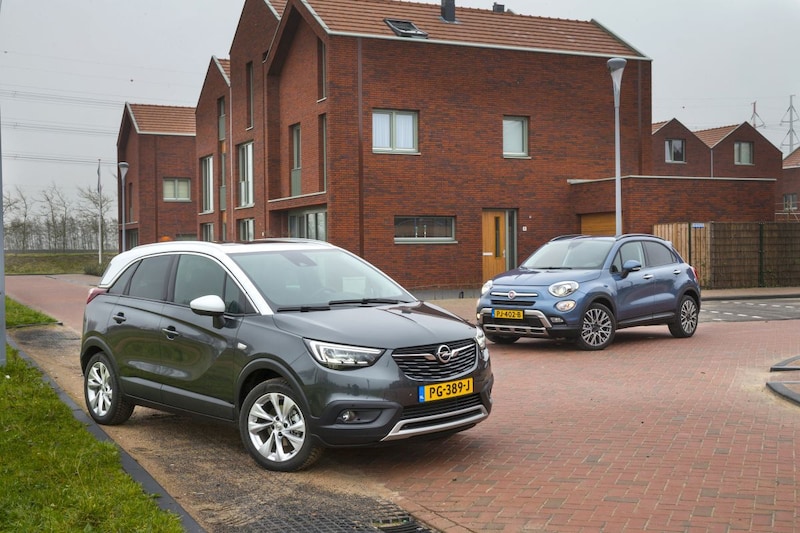
Only 3.6 percent of the cars that left the Dutch showrooms in 2020 are diesel. After dieselgate, sales of this once-popular engine type continue to decline, while they have since been further developed into relatively zero-emission power units. A paradox. How did it go at the place where the sale of new cars takes place? On to the dealer.
We only find one, in the parking lot of the BMW dealer in Zwolle. A black 5-series, a Touring, with the badge on the back: 530d. The enthusiast knows: that is a creamy one. A three-liter six-cylinder diesel with 256 hp and – more importantly – 600 Nm of torque. “I will deliver these this week,” says Ad Janse, an employee with almost fifty years of experience in the car sales business.
He has been working for BMW for twelve years, but he had never experienced the current composition of the range of cars on the dealership site. The mentioned 530d is not the only one of that model on the site. But it is the only self-igniter. More than sixty new cars, a showroom and occasion showroom full … and only one diesel. “A few years ago, 30 to 40 percent of the cars here were diesel. Almost all 3-series, all 5-series, the X3, the X5,” says Janse. Even with a brand like BMW, with a customer base with a relatively large number of business drivers, it does not escape your notice: the diesel is out of favor. Janse: “It will now be a maximum of 5 percent. Or even less.”
This is indicative of the development of Dutch sales figures in recent years (see graph). The share of the diesel car shrunk to 3.6 percent in 2020 – and the trend to work from home will undoubtedly reduce that percentage even further in 2021. The damage to the self-igniter’s image as a result of the diesel debacle, together with the relatively unfavorable tax climate (high bpm and mrb rates), did the preparatory work.
Peaks and valleys
How different was it ten years ago? The Dutch dealers sold no fewer than 156,834 diesel cars in 2011, a stark contrast to the 12,964 units in 2020. “During that period, we had the 320d EfficientDynamics Edition for a while,” says Janse. A 3-series diesel that met the Euro 6 emission standard, which incidentally only came into effect in 2014, and therefore was good for a bpm discount of €1,500. “That was 1 in 20, 1 in 21. And you paid less addition. I delivered a lot of that back then.” In the years that followed, the economical diesel was the main supplier of sales list leaders – think of the dCi badges on the back of Renault’s Mégane Estate and the somewhat nagging three-cylinder diesel roll from Polos, Fabias and Ibizas that you suddenly heard everywhere. The phrase ’14 percent addition’ echoed through the showrooms. Until he disappeared at the end of 2015.
Not only the decreasing addition to tax discount (in 2016 4 instead of 11 percent for cars with an emission of between 50 and 106 grams per kilometer, from 2017 no discount at all) caused a sharp decline in demand for diesels. Dieselgate, the emissions scandal that started with the unveiling of Volkswagen’s cheating software in 2015, also left its mark on the power source type. And how.
“You could definitely notice that,” Janse begins. “Then it started when companies simply said: no more diesels.” The beginning of a free fall in order intakes. “The image was killed in one go,” said the spokesperson for the Bovag industry association, Tom Huyskens. “Although the discussion about environmental zones and the image that people traditionally have of ‘steaming diesels’ do not help either.”
Unknown makes unloved
The fact that the modern diesel engine – which after 2015 had earned some attention from the development departments – became quite ‘clean’, therefore often remains undisclosed in the showrooms. In accordance with the most recent Euro 6d temp emission standard (see table), modern diesel does not produce more nitrogen oxides or particulate matter than a petrol engine, while a diesel does score a greater range per liter of fuel – and therefore emits less CO2 per kilometer driven. The silence around relatively clean diesel is therefore mainly due to the current fiscal climate. Driving a diesel does not pay off – or only if you drive a lot more kilometers than the average Dutch person. “What you do immediately anyway is ask how many kilometers someone travels”, says salesperson Janse. “Nine times out of ten the wallet is the most important, so the story about the improvement of that diesel engine is not discussed at all.”
What constitutes the more than 3 percent of buyers who still buy a diesel? “These are frequent drivers, often with fairly specific wishes,” says Janse. The prospective owner of the 530d on the site of the BMW dealer in Zwolle is one of them. “That customer drives 50 to 60,000 kilometers per year and regularly goes up and down between Zwolle and Munich. He likes to do that without refueling – and you can’t do that without diesel. In addition, he thinks such a six-cylinder is just a nice engine. Only then is the choice made.”
For those who also like the choice for a further developed diesel, but cannot afford the luxury of a brand new one, finding a young used one is now a difficult task. The asking prices are high – as a result of the limited supply and provided it is a vehicle in the ‘correct’ Euro emission class – as is the turnover rate.
Is a diesel, in 2021, a justifiable choice in view of the alleged emission-free future? You will read that next week, in part two of this diesel triptych.
– Thanks for information from Autoweek.nl